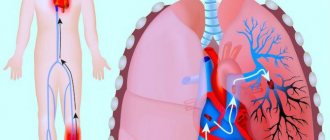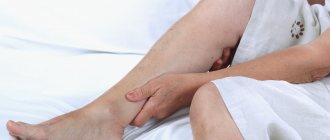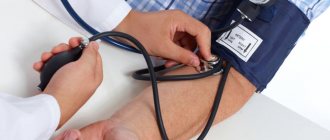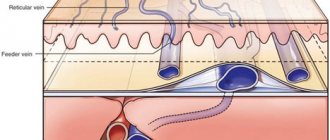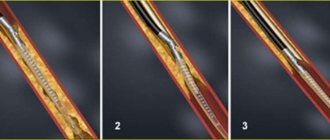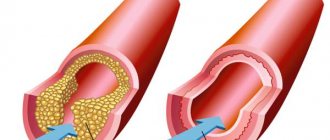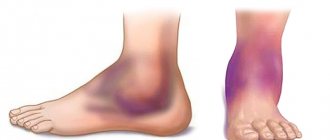Varicose veins develop against the background of pathological changes in the structure of the vascular walls and disturbances in the operation of the valve-pump apparatus. As a result of these deviations, the blood does not rise to the heart, but flows down. The tissues surrounding the affected vessel are deprived of adequate nutrition and oxygen supply. Treatment of the disease requires an integrated approach using various surgical and conservative techniques. An important part of therapy is proper nutrition, which helps eliminate the main risk factors for disease progression. The main thing is not just to reduce food consumption, but to fill your diet with foods that have a positive effect on the cardiovascular system.
Nutrition for thrombosis: general information
Patients, first of all, need to develop a new drinking regimen, in which the amount of liquid drunk (primarily water) should reach the established norm (1.5-2 l). Foods high in vitamins C and K should be removed from your daily diet.
Expert opinion
Treatment of thrombosis includes taking anticoagulants, in particular Warfarin. This drug involves following a strict diet that limits the amount of foods rich in vitamin K. First of all, green tea, spinach, lettuce, cabbage, and beef liver.
Vascular surgeon, phlebologist
Osipova Ekaterina Yakovlevna
Some healthy foods can only be eaten in limited quantities, since the vitamins in their composition not only have a beneficial effect and promote overall recovery, but also increase blood clotting, which is undesirable in this case. We are talking about lettuce leaves, rose hips, tomatoes, various types of cabbage, liver and other offal, currants. These foods should be limited in the diet until the risk of thrombosis is reduced.
Statistics on the localization of thrombotic lesions
Proper nutrition for thrombosis (Thrombosis) completely excludes smoked, salty, and sweet foods. The patient should consume more plant foods - vegetables, fruits, vegetable oils, legumes and grains. Many people are interested in whether it is possible to add vinegar to food, eat pepper and garlic, or hot horseradish, if the threat of disease is minimized? Doctors do not prohibit this food, but there is a taboo on alcoholic drinks and spicy foods.
The diet for thrombosis is based on a diet enriched with polyunsaturated fats, vitamin E and fiber. Preference should be given to steamed, stewed and boiled dishes. Products can also be sliced and baked. The amount of food of animal origin must be reduced.
What are the benefits of foods that are the main sources of fiber? Fresh vegetables and fruits improve the elasticity of the walls of blood vessels.
Fully or partially limited products
A diet for thrombophlebitis involves excluding from the diet strong meat broths, goose, duck, boiled and smoked sausages, fatty meats, mayonnaise, canned meat and fish, bacon, ham, animal fat, confectionery, especially with cream, salty and fatty cheeses, baked goods, as well as high-fat cream and cottage cheese, yogurt with additives, baked milk, pasta, legumes, fried chicken eggs.
The consumption of smoked meats, pickles, and marinades is not allowed. The consumption of salt and salty foods is limited. It is prohibited to drink black tea, coffee, or any alcohol-containing drinks.
Table of prohibited products
| Proteins, g | Fats, g | Carbohydrates, g | Calories, kcal | |
Vegetables and greens | ||||
| canned vegetables | 1,5 | 0,2 | 5,5 | 30 |
Snacks | ||||
| potato chips | 5,5 | 30,0 | 53,0 | 520 |
Flour and pasta | ||||
| vareniki | 7,6 | 2,3 | 18,7 | 155 |
| dumplings | 11,9 | 12,4 | 29,0 | 275 |
Bakery products | ||||
| sliced loaf | 7,5 | 2,9 | 50,9 | 264 |
| buns | 7,9 | 9,4 | 55,5 | 339 |
Confectionery | ||||
| cookie | 7,5 | 11,8 | 74,9 | 417 |
| cake | 3,8 | 22,6 | 47,0 | 397 |
Cakes | ||||
| cake | 4,4 | 23,4 | 45,2 | 407 |
Chocolate | ||||
| chocolate | 5,4 | 35,3 | 56,5 | 544 |
Raw materials and seasonings | ||||
| mayonnaise | 2,4 | 67,0 | 3,9 | 627 |
Dairy | ||||
| milk | 3,2 | 3,6 | 4,8 | 64 |
| cream 35% (fat) | 2,5 | 35,0 | 3,0 | 337 |
| sour cream 30% | 2,4 | 30,0 | 3,1 | 294 |
Cheeses and cottage cheese | ||||
| cheese | 24,1 | 29,5 | 0,3 | 363 |
Meat products | ||||
| fried pork | 11,4 | 49,3 | 0,0 | 489 |
| fatty pork | 11,4 | 49,3 | 0,0 | 489 |
| pork fat | 1,4 | 92,8 | 0,0 | 841 |
| bacon | 23,0 | 45,0 | 0,0 | 500 |
Sausages | ||||
| smoked sausage | 28,2 | 27,5 | 0,0 | 360 |
| smoked sausage | 9,9 | 63,2 | 0,3 | 608 |
Bird | ||||
| duck | 16,5 | 61,2 | 0,0 | 346 |
| goose | 16,1 | 33,3 | 0,0 | 364 |
Fish and seafood | ||||
| fried fish | 19,5 | 11,7 | 6,2 | 206 |
Oils and fats | ||||
| cooking fat | 0,0 | 99,7 | 0,0 | 897 |
| rendered pork fat | 0,0 | 99,6 | 0,0 | 896 |
Alcoholic drinks | ||||
| white dessert wine 16% | 0,5 | 0,0 | 16,0 | 153 |
| vodka | 0,0 | 0,0 | 0,1 | 235 |
| cognac | 0,0 | 0,0 | 0,1 | 239 |
| liquor | 0,3 | 1,1 | 17,2 | 242 |
| beer | 0,3 | 0,0 | 4,6 | 42 |
Non-alcoholic drinks | ||||
| cola | 0,0 | 0,0 | 10,4 | 42 |
| coffee | 0,2 | 0,0 | 0,3 | 2 |
| Pepsi | 0,0 | 0,0 | 8,7 | 38 |
| black tea | 20,0 | 5,1 | 6,9 | 152 |
| energy drink | 0,0 | 0,0 | 11,3 | 45 |
| * data is per 100 g of product | ||||
Nutrition for thrombosis: recommendations
Nutrition for vein thrombosis: what not to eat? First of all, you need to stop drinking coffee or alcohol regularly. Sausages, citrus fruits, baked goods, smoked meats, desserts, canned food, dairy products, and currants should disappear from the daily menu.
The deep vein thrombosis diet aims to reduce the consumption of foods that increase blood clotting rates. The patient must, on the contrary, strive to keep the blood liquid.
The diet is based on the consumption of lean meat, fresh vegetables and fruits. The foundation of the diet for vein thrombosis consists of products with Omega-3 and vitamin E.
!
Bakery products should be excluded from the diet.
Vitamin E prevents the breakdown of poly- and monounsaturated fats. It is taken in the form of capsules or tablets as part of a prescribed regimen. Vitamin E is also found in concentrated form in sunflower seeds, sesame and flax seeds, sprouted wheat sprouts, and avocados. Oils like flaxseed and olive are also useful, but only cold-pressed.
Saturated fats should be limited. If you have problems with blood vessels, you should eat chocolate (75% or more), lard, meat, high-fat hard cheeses, and butter. It will be difficult for the body to process these products compared to quickly digestible sugar, but this source of energy for the cell is much better.
Refined flour, sugar, carbonated drinks, sugary cereals and all other simple carbohydrates contribute to the accumulation of excess fat and fluctuations in blood glucose levels. The more sweets you eat, the more your blood viscosity increases, and this can lead to problems with blood clots.
Expert opinion
It is not recommended to abruptly stop eating foods that you ate before the onset of the disease. Instead, doctors recommend introducing new dietary rules gradually so that the body gets used to them and does not experience stress.
Vascular surgeon, phlebologist
Osipova Ekaterina Yakovlevna
What substances keep veins healthy?
For the full functioning of the cardiovascular system, certain elements are necessary that have a direct impact on its condition:
- Vitamin E - restores the elasticity of vascular walls, accelerates cell regeneration, normalizes blood clotting. “Vitamin of Youth” improves immunity, protects tissues from the effects of free radicals;
- copper - participates in the production of collagen and elastin fibers, prevents the formation of “nodules” on the legs;
- bioflavonoids – activate lymphatic drainage;
- ascorbic acid - relieves inflammatory processes, thins the blood, eliminates swelling, strengthens connective tissue fibers;
- rutin (vitamin P) - restores the cellular structures of capillaries, stops their destruction, acts as an antioxidant. Helps fight swelling, maintains normal blood pressure;
- fiber - stimulates intestinal function, eliminates constipation.
The listed substances do not have to be taken in the form of supplements. All of them are found in regular foods.
Diet for thrombosis: menu
Food for thrombosis and varicose veins should be balanced and selected specifically to thin the blood. During an exacerbation of the disease, the diet is more strict, but on ordinary days you can eat the same food that is healthy for any healthy person.
Menu options for three days
First day. You can cook bran for breakfast. For an afternoon snack you can eat permitted fruits, at lunchtime - soup without fried vegetables (frying is allowed only in olive oil). In the evening, stewed vegetable stew and herbal decoction are offered.
Second day. You can have buckwheat porridge for breakfast. For a snack before lunch, fruits or steamed vegetables are suitable. For lunch you can eat fish soup, as well as berry jelly. Potatoes stewed with vegetables are suitable for dinner.
The third day. For breakfast you can make dark rice porridge and chicken breast. Nuts (cashews) are suitable for a snack, and a vegetable salad for lunch. For dinner, pumpkin stew with berries and a herbal drink are offered.
Approximate menu for several days
Eating habits form quickly, and it is quite difficult to give up your usual diet. A pre-prepared menu for the week helps to simplify the process, in which dishes for each meal will be precisely defined.
Monday
| Breakfast | Snack | Dinner | Afternoon snack | Dinner |
| Oatmeal with dried fruits, weak tea | Ryazhenka | Wheat porridge with lean boiled beef, vegetable salad | Raspberries or strawberries, low-fat kefir | Boiled chicken fillet, cucumber and tomato salad |
Tuesday
| Breakfast | Snack | Dinner | Afternoon snack | Dinner |
| Whole grain toast, lemon and ginger tea | Zucchini, baked or steamed | Baked fish, side dish of steamed vegetables | Ginger tea, dried fruits | Stewed vegetables, dried fruits or baked apple with honey |
Wednesday
| Breakfast | Snack | Dinner | Afternoon snack | Dinner |
| Oatmeal muesli with fresh berries | Citrus | Steamed chicken cutlets, porridge, vegetable salad | Vegetable salad with feta cheese | Boiled chicken, vegetable salad with flaxseed oil |
Thursday
| Breakfast | Snack | Dinner | Afternoon snack | Dinner |
| White bread toast, low-fat cheese, homemade compote | Vegetables cooked in a steamer | Vegetable soup, boiled chicken breast | Kefir or yogurt | Curd casserole with berries |
Friday
| Breakfast | Snack | Dinner | Afternoon snack | Dinner |
| Curd mass with dried fruits, kefir | Natural low-fat yogurt | Salmon or red fish soup, buckwheat with vegetables | Tea, crackers, dried fruits | Vegetables with fish, tomatoes and cucumbers |
Saturday
| Breakfast | Snack | Dinner | Afternoon snack | Dinner |
| Biscuits, tea | Baked vegetables | Buckwheat soup with vegetables and chicken, croutons | Sourdough or natural yogurt | Sandwich with feta cheese and tomato; vegetable stew |
Sunday
| Breakfast | Snack | Dinner | Afternoon snack | Dinner |
| Natural yogurt | Fresh fruits | Lenten soup; hard-boiled egg, black bread | Baked vegetables, kefir | Cottage cheese casserole with raisins |
It is recommended to cook food one time at a time. Several times a week you can use vegetable oil during cooking; preference should be given to flaxseed, sesame or olive oil. They also season salads: mayonnaise and store-bought sauces are prohibited.
Nutrition for deep vein thrombosis of the lower extremities
A diet for deep vein thrombosis of the lower extremities helps to lose weight, reduce blood viscosity, and improve stool. The vessels become cleaner, and their walls become more elastic. In general, metabolic processes in the body are activated.
!
The diet is drawn up by a doctor who prescribes medications and takes into account their compatibility.
The diet for problems with the veins of the lower extremities is introduced only for three to four weeks, and during this time a positive result can be achieved. Some products can reduce the effectiveness of selected medications.
The ratio of venous and arterial thrombosis
Nutrition for thrombosis of the lower extremities involves eating onions (raw or cooked), garlic, berries, ginger, fish oil, and vegetables. Lean meat (boiled or steamed) can be eaten three times a week.
!
It is necessary to completely exclude from the diet those foods that impair blood circulation, stagnation of venous blood occurs and blood clots form.
If you have problems with blood clots, you need to completely eliminate sugar, smoked foods, sweets, canned food, alcohol, juices, processed foods, and coffee.
To prevent diseases associated with the formation of blood clots, prevent congestion and improve blood circulation in the legs, you can use special creams and vitamin complexes.
What is superficial thrombophlebitis
Superficial thrombophlebitis is a fairly serious complication of varicose veins; this disease cannot be ignored. If venous lumps appear on the surface of the legs, it means that the disease has already progressed greatly and has entered an advanced stage.
In addition to the fact that such a pathology looks aesthetically unsightly, thrombosis of the superficial veins is almost always accompanied by aching pain in the legs, and sometimes an increase in body temperature. This is a clear signal that treatment can no longer be delayed.
The following are susceptible to superficial thrombophlebitis:
- pregnant women;
- young mothers immediately after childbirth;
- bedridden patients due to lack of physical activity;
- people suffering from excess body weight.
Diet for thrombosis of hemorrhoids
With such damage to these nodes, an adjusted food intake system should help improve intestinal motility and prevent constipation. It is very important that the stool is maintained normally. If the regimen is violated, the disease can progress to acute hemorrhoids (Haemorrois).
The diet requires sufficient fiber to regulate intestinal function. It is necessary to achieve lower cholesterol levels through foods with a high content of soluble plant fibers.
!
The menu should include legumes, offal, fruits and seaweed.
Pectin substances belong to the group of soluble substances. When dissolved, they swell and absorb toxins from the intestinal walls. Due to this, glucose absorption slows down, and as a result, blood sugar levels decrease. Microflora breaks down pectins in the large intestine, thereby ensuring the required level of acidity.
Diet for thrombosis: products
Why is thrombophlebitis dangerous?
The most dangerous outcome of thrombophlebitis is death. If a blood clot breaks away from its permanent location, a blockage may occur in one of the veins in the circulatory system, cutting off blood circulation.
In addition to death, thrombophlebitis is dangerous due to numerous complications. The most unpleasant are disturbances in the functioning of the venous system and the development of trophic ulcers. Such pathologies almost always require complex surgical treatment and constant monitoring, which significantly complicates the patient’s life, not to mention physical and psychological suffering.
Another complication may be chronic pulmonary hypertension caused by previous damage and deformation of the pulmonary artery. A person with such a complication suffers from constantly high blood pressure, weakness, headaches, etc.
Fortunately, the modern level of development of medicine and diagnostic tools makes it possible to detect thromboembolism in the early stages and successfully treat the disease in the first months after treatment.
Products
The patient is prescribed food containing polyunsaturated fats. Ideal products in this regard are fish oil and flaxseed oil. The minimum consumption of fish is twice weekly. The diet must include trout, herring, mackerel and other fish caught in the natural environment.
What you can eat:
- the consumption of legumes, sunflower seeds, pumpkin dishes is allowed,
- dried fruits,
- Herbal infusions (chamomile, nettle) have a beneficial effect on the body in case of the disease in question,
- When choosing tea, give preference to green.
What other foods should the patient eat? Vegetable soup, potatoes, vegetables, berries and fruits will have a positive effect on your health. Garlic, onions, avocado and sprouted wheat should also be included in the mandatory list of products.
Recommendations for the treatment of thrombophlebitis
Conservative therapy and surgical intervention are two ways to stop the inflammatory process inside the veins. Conservative treatment includes the following measures:
- moderate physical activity aimed at stimulating blood circulation in the veins;
- wearing compression garments or elastic bandages on the affected surface;
- taking medications, treating surfaces with external compounds;
- UHF;
- hirudotherapy.
Subcutaneous administration of medications that have a therapeutic effect may be prescribed by a doctor.
Surgical intervention involves performing invasive and non-invasive operations using special equipment. It is likely that your doctor will prescribe one of the following procedures:
- Crossectomy. In this case, ligation of the affected vein and its tributaries is performed.
- Thrombectomy. Removing blood clots from a damaged vein. After this operation, additional dressing may be done.
- Miniphlebectomy. Removal of varicose veins.
- Installation of a vena cava filter. Minimally invasive surgery, used when there is an increased risk of complications.
- Laser treatment. The most gentle way to combat blood clots is by exposure to a laser beam.
The doctor makes the decision to choose the type of operation based on research and the location of the problem area. There is no need to be afraid of the procedure; modern treatment methods are as gentle as possible. In addition, surgery is prescribed only in severe cases, when there is a risk that classical treatment will not help. If you haven’t got everything up and running yet, then it is likely that you will be able to get by with minimal or no intervention at all.
When strict adherence to rules is required
A strict diet is provided only for a limited period of time - during exacerbation of the disease. When the condition returns to normal, you can begin to expand the menu, but not violate the principles of a balanced diet.
If you follow the advice properly and choose only healthy foods, you can significantly improve your condition after illness and feel how your quality of life has changed for the better.
In addition to the treatment prescribed by the phlebologist, diet and lifestyle correction, Normaven® products can be used as an additional remedy for thrombosis. Systematic use of the Cream and Tonic for the legs can reduce the symptoms of the disease, relieve fatigue and a feeling of heaviness in the lower extremities, minimize swelling and cramps, and reduce the intensity of the vascular pattern. Clinical studies of Normaven® Foot Cream have proven that these results can be achieved within a 3-month course of use. Normaven® cream and tonic were developed by specialists from the pharmaceutical company VERTEX and have the necessary documents and certificates.
How is thrombophlebitis diagnosed?
Timely diagnosis of the disease almost always allows one to achieve positive treatment results. To identify superficial and especially deep thrombosis, several methods are used at once:
- Rheovasography. This technique allows you to assess the state of blood flow in a specific organ or section of the circulatory system.
- Tomography or MRI. This deep vein examination helps identify disease hidden within the lower extremities.
- Angiography. Includes invasive examination by highlighting the veins. This technique allows you to examine the smallest damage to blood vessels and take timely treatment measures.
- Ultrasound. Ultrasound scanning of veins and vessels allows you to see small blood clots, distinguish damage to veins, etc.
With an integrated approach, it is possible to create a comprehensive picture of the disease and its treatment. To make a diagnosis, we recommend contacting a phlebologist or vascular surgeon. Examination using equipment cannot be neglected, since superficial inflammation often passes into the deeper layers without symptoms.
Visual inspection and palpation are important. An experienced doctor is able to diagnose superficial thrombophlebitis during a personal examination. Often, at an appointment, the bilateral nature of the disease is revealed, when thrombosis is detected in both legs.
How to recognize the disease
Symptoms of thrombophlebitis are pronounced if the disease occurs in an acute form and is localized in the superficial veins. It is easy to recognize by:
- acute pain concentrated along the inflamed saphenous vein;
- redness, swelling, increased temperature in the area of the inflamed area of the vessel;
- swelling of the vein, which is clearly visible on the surface of the skin;
- the presence of seals in some parts of the vein in places of thrombosis;
- a general increase in body temperature, but not higher than 37.5-38°C;
- swelling of the soft tissues of the limb.
The elevated temperature lasts for several days, then subsides regardless of the condition of the limb, and other pronounced signs of thrombophlebitis gradually disappear. Often, patients do not consult a doctor, limiting themselves to applying a soothing ointment to the affected area. However, refusal of qualified assistance is extremely dangerous, since if a blood clot breaks off, severe complications can develop in a very short time, from ischemic or gangrenous thrombophlebitis to pulmonary embolism. Under no circumstances should you massage the affected area of the vein, as in this case the risk of blood clot rupture increases significantly.
The inflammatory process that develops in the deep veins of the limb is especially dangerous. Most often, it is asymptomatic or with minor general signs of malaise, by which it is impossible to recognize and localize the disease. The risk of thrombosis increases if the superficial veins are affected by varicose veins, accompanied by insufficient function of the valves of the perforating veins that connect the superficial and deep vessels.
Are you experiencing symptoms of thrombophlebitis?
Only a doctor can accurately diagnose the disease. Don't delay your consultation - call
phlebolog.pro
Attention: this information is not a medical recommendation and cannot replace medications, treatment procedures, diagnostics or consultation with a doctor. There may be contraindications. Specialist consultation required!
According to the World Health Organization, in 2001 the number of overweight people in third world countries exceeded the number of hungry people. Since then, the problem of obesity has only gained momentum, acquiring the characteristics of a pandemic. Excess weight entails diseases such as hypertension, diabetes, coronary heart disease and, including varicose veins.
More than 37 thousand different diets have been officially registered, but over the past 20 years, the total excess weight of the world's population has increased 3 times. Diet involves only a temporary change in eating habits, so the concept of diet should be replaced by the concept of proper nutrition.
To date, the influence of two factors related to nutrition and contributing to varicose veins has been proven:
- excess weight
- stool retention (constipation)
A lack of certain vitamins and microelements, as well as an imbalanced protein/fat/carbohydrate ratio, also most likely affects the course of varicose veins. However, it is more difficult to prove this in a strictly scientific way.
In the field of healthy eating, in my opinion, there is now an overabundance of information. Advice is often contradictory, but in order to simply improve your health and save yourself from a lot of problems, you only need to follow a few simple rules. They are very simple, you should not torture yourself with hunger, you just need to give up a number of extremely harmful modern products. For simplicity, I have broken down the nutritional recommendations into 3 levels:
1. If you just want to get rid of excess fat, normalize your weight and, accordingly, save yourself from a lot of problems, just give up sugar and trans fats. These substances have never been found in the human diet; only in recent decades have they truly become the basis of our diet. What is most striking is that they are ridiculously cheap, which is why all dishes in fast foods and other restaurants, as well as ready-made food in supermarkets, are stuffed with them. Avoid sweets, cakes, ice cream, mayonnaise, margarine, and butter. Eat fruits (in moderation), buy unprocessed foods at the market (meat, fish), cook your own food. Eliminate liquid calories - cola, lemonade, kvass, etc. They are very dangerous, you do not feel full. For the same reason, you should not drink freshly squeezed juices; it is better to eat whole fruits.
2. If you want to significantly improve your health, you should give up fast carbohydrates - white rice, any bread and flour products, cereals. Also eliminate saturated fats. Eat only lean meat (chicken breast, turkey), fish, seafood. Many, many people should avoid eating grains and dairy products. Lactose intolerance and celiac disease are well known and less common. However, milk and cereals entered our diet not so long ago and are quite risky products. The connection between their use and health problems can be difficult to trace, but there is evidence that they can contribute to autoimmune diseases, allergies, oncology and many other problems.
3. If you want to significantly improve the quality of your diet, you should pay special attention to the origin of your food. If it is meat, then preferably game or domestic animals raised in the natural environment, on pasture. Be sure to include cold-water sea fish in your diet, preferably wild ones as well. Fruits and vegetables are grown using a variety of fertilizers and are all processed before they hit the shelves, making natural products increasingly difficult to find.
Carbohydrates
You should minimize the consumption of so-called “fast” carbohydrates (with a glycemic index of more than 60): sugar, corn, peanut oil, etc., syrups, beer and other alcohol. These carbohydrates dramatically increase the production of insulin, a transport hormone that promotes fat storage. A sharp change in its concentration in the blood disrupts metabolism. It must be said that there are a lot of such carbohydrate products, most likely it will not be possible to completely eliminate them, so you should limit their quantity, say, consume them only on holidays. Here are other examples of “fast” carbohydrates: bananas, honey, raisins, grapes, sugar, beer, dates, pumpkin, turnips, parsnips, boiled carrots, rye and grain bread, cookies and other baked goods.
It is much healthier to get carbohydrates from buckwheat, rice, oatmeal, pasta made from solid cereals will do.
Fats
Separate mention should be made of fats, because their excess intake from food is the most common nutritional mistake in Russia, Europe and the USA. Fat consumption should be reduced; it should make up no more than 20-30% of the diet (20-25% proteins, 50-60% carbohydrates). In addition, it is necessary to significantly reduce the consumption of saturated fats (lard, butter, whole milk, etc.) and completely eliminate trans fats (margarine, mayonnaise, fast food, etc.). It is advisable to get most of the fats from plant foods; you should also pay attention to foods rich in Omega-3 (red fish, nuts, sesame, flax). You can take additional fats, Omega-3 and Omega-6 preparations only if there is a lack of fat in your diet!
Now let's move on to the recommendations for creating a diet for varicose veins.
#1: Limiting your calorie intake High-calorie diets are associated with an increased risk of varicose veins because they can contribute to the development of obesity and overweight. Many people experience a significant reduction in the symptoms of venous insufficiency after losing just 10% of their body weight. To lose weight, you need to create a calorie deficit. First, you can reduce your calorie intake from food, which will force your body to use up energy reserves such as subcutaneous or visceral fat. Secondly, you can increase your physical activity.
Please note that only overweight and obese people need to lose weight. You must first undergo a medical examination and consult with a nutritionist. There may be contraindications, consultation with a specialist is necessary.
As practice shows, any diet is meaningless if you do not count calories. Without such a diary, a person is not able to control himself, and this is the main reason for the ineffectiveness of any diet. Nowadays it is very convenient to count calories using your smartphone applications: “Calorie Counter” from FatSecret, Calorie Calculator, iWeightBody, Calorie Counter-ShapeUp Club, etc.
You should start by calculating your normal weight. This can be done using special formulas. One of the simplest formulas was proposed by the French surgeon and anthropologist Paul Broca. To calculate normal body weight in kilograms using Broca's formula, subtract 100 from height in centimeters. M = P-100, where M is normal body weight in kg, P is height in cm. Example: your height is 172 centimeters. From 172 we subtract 100 and get 72. This means that your normal weight, according to Brock’s formula, is 72 kilograms.
In recent years, the body mass index
(BMI) .
Weight in kilograms (M) divided by height in meters (P) squared. For example: your height is 1.72 meters, your body weight is 72 kilograms. We square 1.72 m - we get 2.9584 m2. We divide 72 kilograms by 2.9584 m2. After rounding, we get the figure 24.3, which will be your height and weight indicator - it is within the normal range. You have normal body weight. If your body mass index is less than 18.5 kg/m2, then you are underweight; BMI 18.5 - 24.9 - Normal body weight; BMI from 25 to 29.9 - overweight; BMI 30 - 34.9 - class I obesity; 35 - 39.9 - II degree obesity; if your body mass index is more than 40, you have grade III obesity. Weight loss is a key aspect of the anti-varicose veins diet. To lose 0.5 kg per week, you need to create a deficit of approximately 3,500 calories per week. This can be done by reducing your daily calorie intake by 500 calories per day (500 calories x 7 days = 3500 calories). Most nutritionists recommend creating a deficit of 3,500 to 7,000 calories per week for healthy and safe weight loss. Excessive calorie deficit (more than 7,000 calories per week) can impair body functions and even lead to arrhythmias and other acute conditions. In addition, excessive dietary restriction can be counterproductive due to the activation of the body's fat-storing mechanisms. Severe calorie restriction can cause muscle loss and decreased thyroid hormone production, leading to a decrease in metabolic rate and therefore fewer calories burned throughout the day. In addition to limiting calories, it is worth paying attention to the distribution of calorie intake throughout the day. It is usually recommended to eat 5-6 times a day in small portions. This allows you to maintain a more or less constant level of hormones and nutrients in the blood, resulting in reduced cravings for sweets and starches. Breakfast should be the biggest meal of the day. Eating a hearty breakfast kickstarts your metabolism at the proper speed and you will burn more calories throughout the day.
#2: Fiber-rich foods
Fiber is a component of plant foods that is not digested by the body's enzymes. Therefore, fiber is not broken down, is not absorbed into the blood and cannot be used for energy. Dietary fiber can be divided into two main categories: soluble and insoluble. Soluble fiber forms a gel when mixed with water, while insoluble fiber moves through the intestines unchanged. Thanks to its ability to make stools larger and softer, soluble fiber can prevent constipation. Constipation increases pressure on the veins, which over time can contribute to the development of varicose veins. Excellent sources of soluble fiber include oats, flaxseeds, peas, beans, apples, carrots, barley, and berries.
#3: Drink more water
If you eat a lot of fiber-rich foods to avoid constipation, be sure to drink enough water, otherwise the fiber can have the opposite effect and lead to constipation, which in turn can increase the pressure in the veins of the lower extremities. It is also advisable to avoid drinking alcohol, coffee and tea, as these substances dehydrate the body.
You can calculate the required amount using two simple formulas (for men and women):
- Men: Body weight x 35
- Women: Body weight x 31
For example, I weigh 81 kg, which means my daily water requirement is about 2.8 liters.
#4: Eat plenty of foods rich in vitamin C If you have varicose veins, one of the best recommendations is to consume foods rich in vitamins C and E. Vitamin C is essential for the production of collagen and elastin, two important components of connective tissue that help keep veins tight and healthy. elastic. Vitamin C also increases blood circulation. It is therefore not surprising that vitamin C deficiency may be associated with varicose veins. The positive effects of vitamin C on blood vessels are believed to be more pronounced when vitamin C is taken together with vitamin E.
#5: Eat Foods That Contain Bioflavonoids
Bioflavonoids (or simply flavonoids) are a group of compounds found in plants. These compounds give fruits and vegetables their vibrant colors and protect them from germs and insects. There is strong evidence that the properties of bioflavonoids not only protect plants, but also benefit people. Some studies have found a link between high, long-term intake of flavonoids and a reduced risk of developing varicose veins. The beneficial effects of flavonoids are believed to be due to their ability to strengthen the walls of blood vessels and inhibit the action of free radicals within the vessels.
Rutin is one of the flavonoids that has been extensively studied as a potential remedy for varicose veins. Evidence suggests that these powerful bioflavonoids, which are found in abundance in buckwheat, may help relieve swelling and pain associated with varicose veins. Besides buckwheat, there are several other foods that contain rutin in significant quantities.
